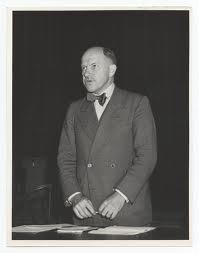
PREV ARTICLE
FULL ISSUE
PREV FULL ISSUE
Born on Christmas in St. Paul, Minnesota, to Mary Etta Friend (1844-1907) and Charles H. Manship (1843-1911), Paul Howard Manship considered it a good omen that he was the seventh child of a seventh daughter. He began to draw in emulation of his sister Adeline (1874-1893), but it was particularly his brother Luther (1879-1931) who served as an example. Luther earned his living as an engraver though his main interest was painting. Manship began his formal study of art at the Mechanic Arts High School and the Saint Paul School of Art (later the Saint Paul Institute of Arts and Sciences) in Minnesota. His initial decision to pursue a career as a sculptor was largely motivated by his color blindness; he had started out life as a painter. For a painter color blindness is obviously a severe handicap, but for a sculptor it might prove an advantage: the eye, not being distracted by color, could concentrate on form. Indeed, a great sensitivity to form, to contour, and to line was to prove one of Manship's major strengths. By the age of nineteen, Paul Manship had saved enough from his work as a freelance illustrator and designer to head for New York City where he immediately enrolled at the Art Students League. His sculpture teacher there was Hermon Atkins MacNeil (1866-1947), the first of several sculptors trained at the Ecole des Beaux-Arts with whom Manship was to study. Soon after his arrival in New York, Manship also found a position as an assistant to Solon Borglum (1868-1922), who was working on two major equestrian monument commissions at the time. During his apprenticeship with Borglum, Manship worked almost exclusively on animal figures, developing proficiency with this subject that would serve him well on later commissions. Manship always credited Borglum as the master who had most influenced him.  Wayne Homren, Editor The Numismatic Bibliomania Society is a non-profit organization promoting numismatic literature. See our web site at coinbooks.org. To submit items for publication in The E-Sylum, write to the Editor at this address: whomren@gmail.com To subscribe go to: https://my.binhost.com/lists/listinfo/esylum All Rights Reserved. NBS Home Page Contact the NBS webmaster 
|